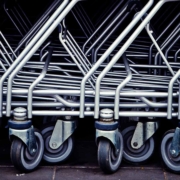Is your Promotion Planning and Execution Process Out of Date?
Promotions are Vital for Greater Revenue and Reduced Inventory
In-Store trade promotions are the lifeblood of the supermarket industry and discount retailer. Trade promotions include products featured in ads and in-store circulars, products displayed on end of aisle caps or away from their normal shelf location, and products with temporary price reductions. They create Trial and Repeat Purchases AND create all important Impulse Sales. You know impulse sales; they are all of those items you purchased that were not on your shopping list!
According to a recent study from The Nielsen Company, 42.8% of grocery purchases are sold on promotion, up from 40.8% a year ago. Drug stores, too, sell a significant portion of products on promotion, with 40.4% of sales linked to displays and/or features.
Steps for Successful Promo Planning
With grocery sales on promo items approaching 50%, staying in-stock on the shelf and during promotional events is critical to winning the first moment of truth with retail shoppers. The first step for successful promotion planning is having a demand forecasting system that properly segregates lost, promotion, and event related sales from regular sales. It must also support the integration of future promotions into your replenishment planning.
If you are not segregating in your demand history, then you won’t be able to measure the effects of promotions and utilize that information for future use. In my mind this step is fundamental and reminds me of a famous quote on insanity:
Insanity: doing the same thing over and over again and expecting different results.
Albert Einstein
To read about this in detail, please take a look at one of our more popular blogs on the subject of demand forecasting and replenishment: Why Sales Forecasting Systems are Wrong for Inventory Replenishment
The second step to success in promotions is the monitoring of promotions and events after they start and the determination of if your replenishment plan meets the demand at the store level, mid-flight.
?
Is your Execution stuck in a Promotion Planning Loop?
Companies tend to design, analyze, and execute promotions at the regional or chain level rather than at a granular store level: a classic top down planning approach. With this approach, they are applying same promotion lift number across all stores. The store level promotional data is often not analyzed until after an event is over, removing any possibility to execute a mid-course correction on a current event. Also, if their legacy demand forecasting system is not capturing prior lost sales, then their store item level forecast will be wrong, affecting their future store promotion allocations.
Alerts and Automated Messaging: Keys to Successful Execution
Utilizing integrated alerts and automated messaging from a cloud based solution, you can increase supply chain visibility and collaboration inside your company and with your trading partners. This provides a demand sensing feedback loop of information and recommended actions. Increasing a supplier’s or planner’s visibility to real time, granular store data can result in earlier store deliveries, generating greater sales and promotional lift along with higher customer satisfaction. By providing your planners and suppliers with real time alerts and promotional scorecards, you can transform your promotion execution.
With demand sensing information such as sell through percentages, you can quickly identify runaway promotional events. You can collaborate with less effort, make your supply chain more responsive, and execute additional replenishment orders, allowing you to maintain on shelf availability throughout the duration of the promotion.
Additionally, you can provide baseline days of supply information and identify inflated inventory levels relative to expected demand post-promotion. This would allow you to slow replenishment orders and minimize inventory overstock.
A demand sensing feedback loop with promotional scorecards and real time alerts can transform your promotion process, aligning your inventory and execution activities. The results are maximized market opportunity, profitability, and customer satisfaction.
What’s Next?
Our next blog: The other side of promotions: supplier price changes
How do you forward buy to hedge against a price increase? The cost of money, shelf-life, and percent price increases are all factors your inventory optimization solution should manage, but what if it doesn’t?
Subscribe to our blog for free today; you really don’t want to miss a thing!
Copyright © Data Profits, Inc. 2013 All Rights Reserved.
- How to Avoid Carrying Cost Mistakes in Inventory Optimization - June 10, 2024
- 3 Common Forecasting Software Issues and How to Fix - May 20, 2024
- The Hidden Connection: Lead Time And Inventory Optimization Explained - May 13, 2024










